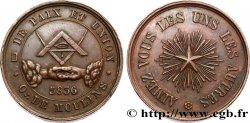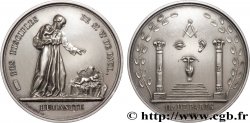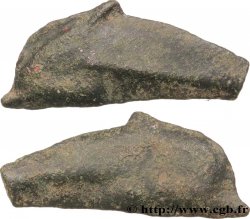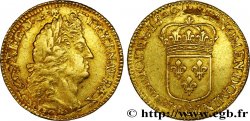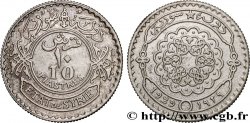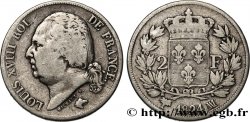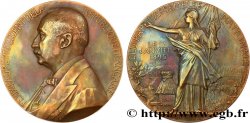Back 1/1
fjt_07668 - FREEMASONRY LOGE LES AMIS DE LA LIBERTÉ n.d.
Not available.
Item sold on our e-shop (2010)
Price : 75.00 €
Item sold on our e-shop (2010)
Price : 75.00 €
Type : LOGE LES AMIS DE LA LIBERTÉ
Date: n.d.
Metal : red copper
Diameter : 29 mm
Orientation dies : 6 h.
Weight : 11,04 g.
Edge : lisse
Rarity : R1
Catalogue references :
Obverse
Obverse legend : LIBERTE. EGALITE.
Obverse description : Inscription en deux lignes dans une couronne de chêne ; signé B..
Reverse
Reverse legend : CONSOCIARE. AMAT.
Reverse description : Pallas casquée avec cimier à droite, debout à gauche, tenant un niveau et une lance.
Reverse translation : Elle aime à unir.
Commentary
À première vue, il pourrait s’agir d’une frappe tardive, voire postérieure, bien que la tranche soit lisse, sans cannelures mais l’argument peut être retourné.
En effet, si il était d’usage au XVIIIe siècle que les jetons de cuivre fussent à tranche lisse, un monnayeur du XIX aurait certainement ignoré qu’il existe des exemplaires de ce jeton en cuivre avec tranche cannelée qui ont toutes les chances d’être eux, d’époque, à l’aspect, la technique de frappe et le poids. Il aurait donc par erreur omis les cannelures ? Cet exemplaire semble un peu lourd et sa frappe trop franche pour être d’époque.
Le passage de la série au portrait royal à ce nouveau type est du même ordre que le glissement de l’écu royal à la pièce de 5 francs Union et Force. Le portrait du souverain finit remplacé par un symbole, ici un simple slogan.
Il existe avec cet avers, de même coin également signé B., un jeton qui reprend le dernier revers avec la légende IUSTUM. RECTUMQUE. TUETUR (Elle protège ce qui est juste et droit) de la série Justice de Feuardent (après le Feuardent 346).
La légende de revers est extraite des Odes d'Horace (4.II, od.3, v.10). Ce jeton, qui reprend, en lui supprimant son exergue et sa date, un revers de la série des bâtiments du Roi, a été utilisé comme "jeton banal" par des loges maçonniques trop pauvres pour faire frapper leurs propres jetons. Il est aussi attribué sans preuve aux architectes.
L’analyse de Marc Labouret, qu’il n’y a aucune raison de ne pas suivre, l’attribue à la Loge Les Amis de la Liberté.
La franc-maçonnerie s’implante en France aux alentours du premier quart du XVIIIe s. sous l’influence d’aristocrates anglais. Initiatique, elle est fondée sur le rite hiramique, du nom d’Hiram de Tyr, personnage biblique, architecte du roi Salomon sur le chantier du Temple et qui a résisté à la torture sans livrer ses secrets. Hiram a aussi donné un point de départ du calendrier maçonnique commençant 4000 ans avant le calendrier chrétien. Les symboles servent de signes de reconnaissance entre les initiés, notamment des outils de constructeur de cathédrales (équerre, compas, niveau, maillet, etc.), des formes (triangle, étoile), des nombres (trois, cinq, sept) et des lettres.
At first glance, it could be a late or even later strike, although the edge is smooth, without grooves, but the argument can be reversed..
Indeed, if it was customary in the 18th century for copper tokens to have smooth edges, a 19th century minter would certainly have been unaware that there are examples of this copper token with a fluted edge which have every chance of being from the period, in terms of appearance, striking technique and weight.. So he may have mistakenly omitted the fluting? This example seems a little heavy and its strike too sharp to be period..
The transition from the royal portrait series to this new type is of the same order as the shift from the royal shield to the 5 franc Union et Force coin.. The portrait of the sovereign is eventually replaced by a symbol, here a simple slogan.
It exists with this obverse, from the same die also signed B. , a token which takes up the last reverse with the legend IUSTUM. RECTUMCH. TUETUR (She protects what is just and right) from the Justice series by Feuardent (after Feuardent 346).
The reverse legend is taken from the Odes of Horace (4. II, od. 3, v. 10). This token, which, without its exergue and date, is a reverse of the series of the King's buildings, was used as a \\\"banal token\\\" by Masonic lodges too poor to have their own tokens struck.. It is also attributed without proof to architects.
Marc Labouret's analysis, which there is no reason not to follow, attributes it to the Lodge Les Amis de la Liberté.
Freemasonry was established in France around the first quarter of the 18th century.. under the influence of English aristocrats. Initiatory, it is based on the Hiramic rite, named after Hiram of Tyre, a biblical character, architect of King Solomon on the construction site of the Temple and who resisted torture without revealing his secrets.. Hiram also gave a starting point for the Masonic calendar beginning 4000 years before the Christian calendar. Symbols serve as signs of recognition between initiates, including cathedral builder tools (square, compass, level, mallet, etc.). ), shapes (triangle, star), numbers (three, five, seven) and letters
En effet, si il était d’usage au XVIIIe siècle que les jetons de cuivre fussent à tranche lisse, un monnayeur du XIX aurait certainement ignoré qu’il existe des exemplaires de ce jeton en cuivre avec tranche cannelée qui ont toutes les chances d’être eux, d’époque, à l’aspect, la technique de frappe et le poids. Il aurait donc par erreur omis les cannelures ? Cet exemplaire semble un peu lourd et sa frappe trop franche pour être d’époque.
Le passage de la série au portrait royal à ce nouveau type est du même ordre que le glissement de l’écu royal à la pièce de 5 francs Union et Force. Le portrait du souverain finit remplacé par un symbole, ici un simple slogan.
Il existe avec cet avers, de même coin également signé B., un jeton qui reprend le dernier revers avec la légende IUSTUM. RECTUMQUE. TUETUR (Elle protège ce qui est juste et droit) de la série Justice de Feuardent (après le Feuardent 346).
La légende de revers est extraite des Odes d'Horace (4.II, od.3, v.10). Ce jeton, qui reprend, en lui supprimant son exergue et sa date, un revers de la série des bâtiments du Roi, a été utilisé comme "jeton banal" par des loges maçonniques trop pauvres pour faire frapper leurs propres jetons. Il est aussi attribué sans preuve aux architectes.
L’analyse de Marc Labouret, qu’il n’y a aucune raison de ne pas suivre, l’attribue à la Loge Les Amis de la Liberté.
La franc-maçonnerie s’implante en France aux alentours du premier quart du XVIIIe s. sous l’influence d’aristocrates anglais. Initiatique, elle est fondée sur le rite hiramique, du nom d’Hiram de Tyr, personnage biblique, architecte du roi Salomon sur le chantier du Temple et qui a résisté à la torture sans livrer ses secrets. Hiram a aussi donné un point de départ du calendrier maçonnique commençant 4000 ans avant le calendrier chrétien. Les symboles servent de signes de reconnaissance entre les initiés, notamment des outils de constructeur de cathédrales (équerre, compas, niveau, maillet, etc.), des formes (triangle, étoile), des nombres (trois, cinq, sept) et des lettres.
At first glance, it could be a late or even later strike, although the edge is smooth, without grooves, but the argument can be reversed..
Indeed, if it was customary in the 18th century for copper tokens to have smooth edges, a 19th century minter would certainly have been unaware that there are examples of this copper token with a fluted edge which have every chance of being from the period, in terms of appearance, striking technique and weight.. So he may have mistakenly omitted the fluting? This example seems a little heavy and its strike too sharp to be period..
The transition from the royal portrait series to this new type is of the same order as the shift from the royal shield to the 5 franc Union et Force coin.. The portrait of the sovereign is eventually replaced by a symbol, here a simple slogan.
It exists with this obverse, from the same die also signed B. , a token which takes up the last reverse with the legend IUSTUM. RECTUMCH. TUETUR (She protects what is just and right) from the Justice series by Feuardent (after Feuardent 346).
The reverse legend is taken from the Odes of Horace (4. II, od. 3, v. 10). This token, which, without its exergue and date, is a reverse of the series of the King's buildings, was used as a \\\"banal token\\\" by Masonic lodges too poor to have their own tokens struck.. It is also attributed without proof to architects.
Marc Labouret's analysis, which there is no reason not to follow, attributes it to the Lodge Les Amis de la Liberté.
Freemasonry was established in France around the first quarter of the 18th century.. under the influence of English aristocrats. Initiatory, it is based on the Hiramic rite, named after Hiram of Tyre, a biblical character, architect of King Solomon on the construction site of the Temple and who resisted torture without revealing his secrets.. Hiram also gave a starting point for the Masonic calendar beginning 4000 years before the Christian calendar. Symbols serve as signs of recognition between initiates, including cathedral builder tools (square, compass, level, mallet, etc.). ), shapes (triangle, star), numbers (three, five, seven) and letters








 Report a mistake
Report a mistake Print the page
Print the page Share my selection
Share my selection Ask a question
Ask a question Consign / sell
Consign / sell
 Full data
Full data

